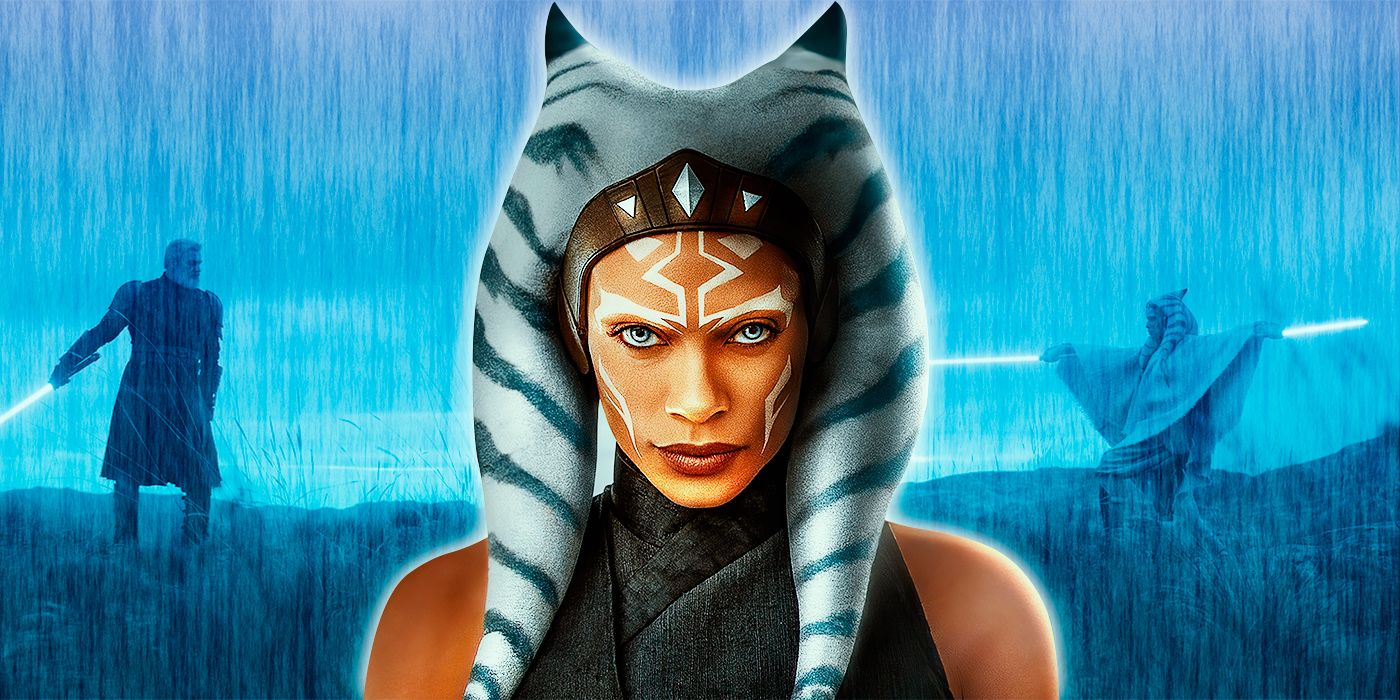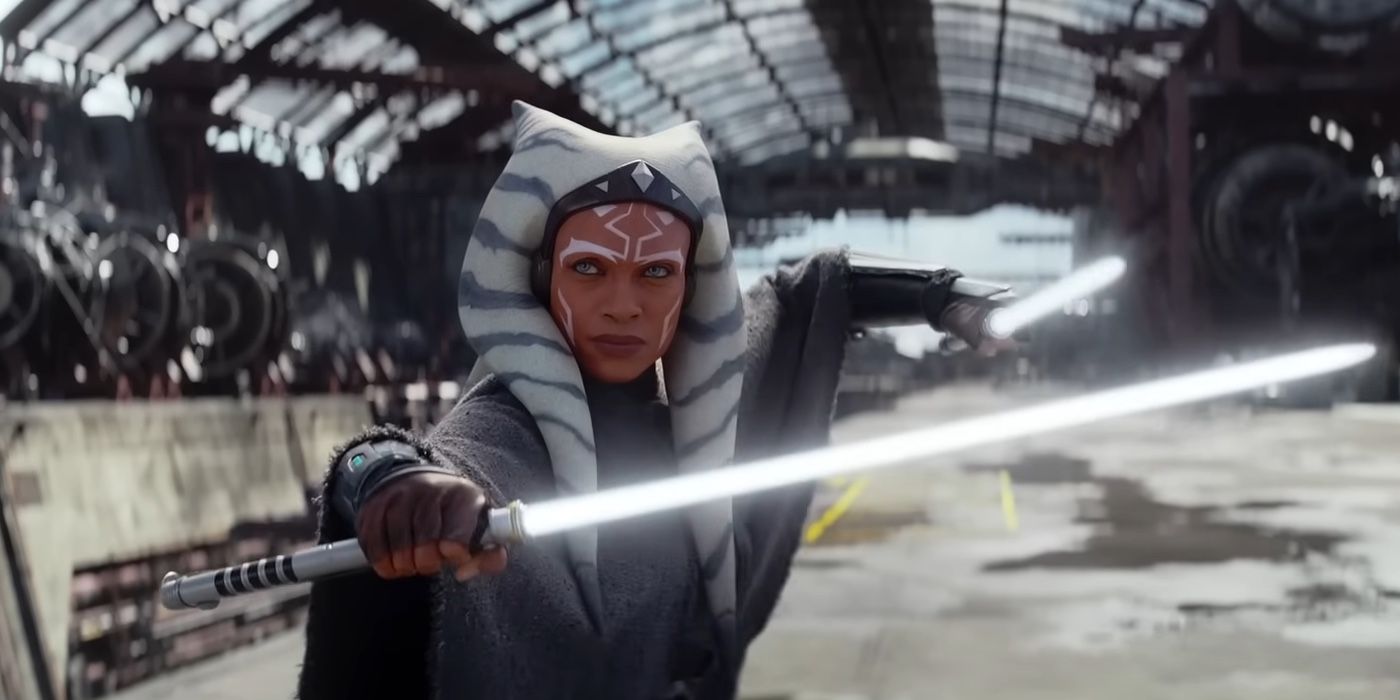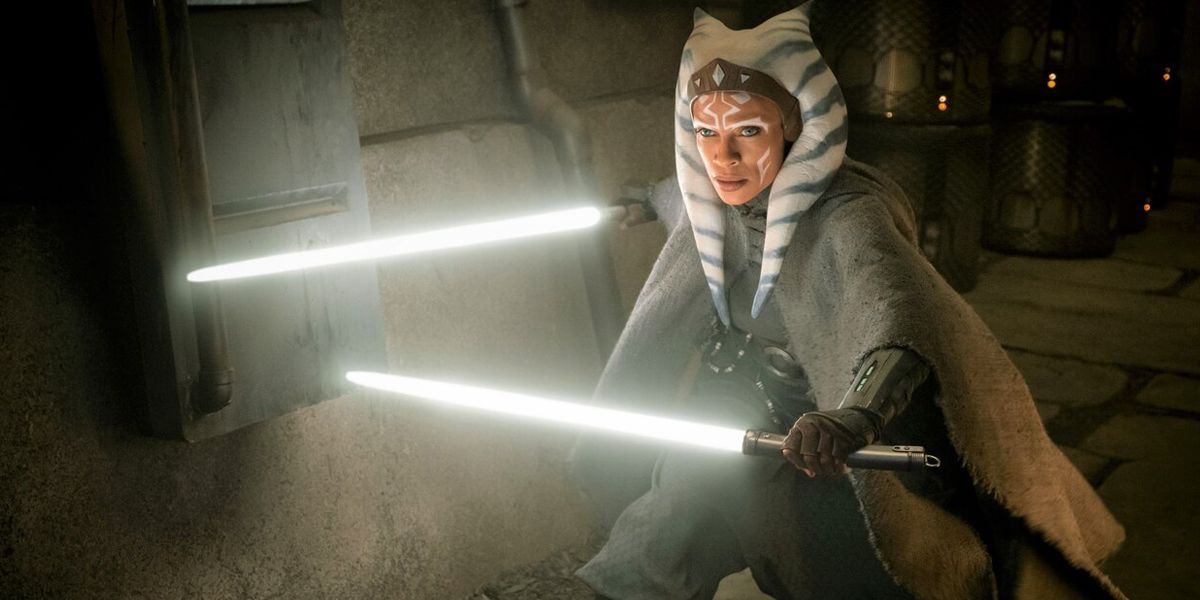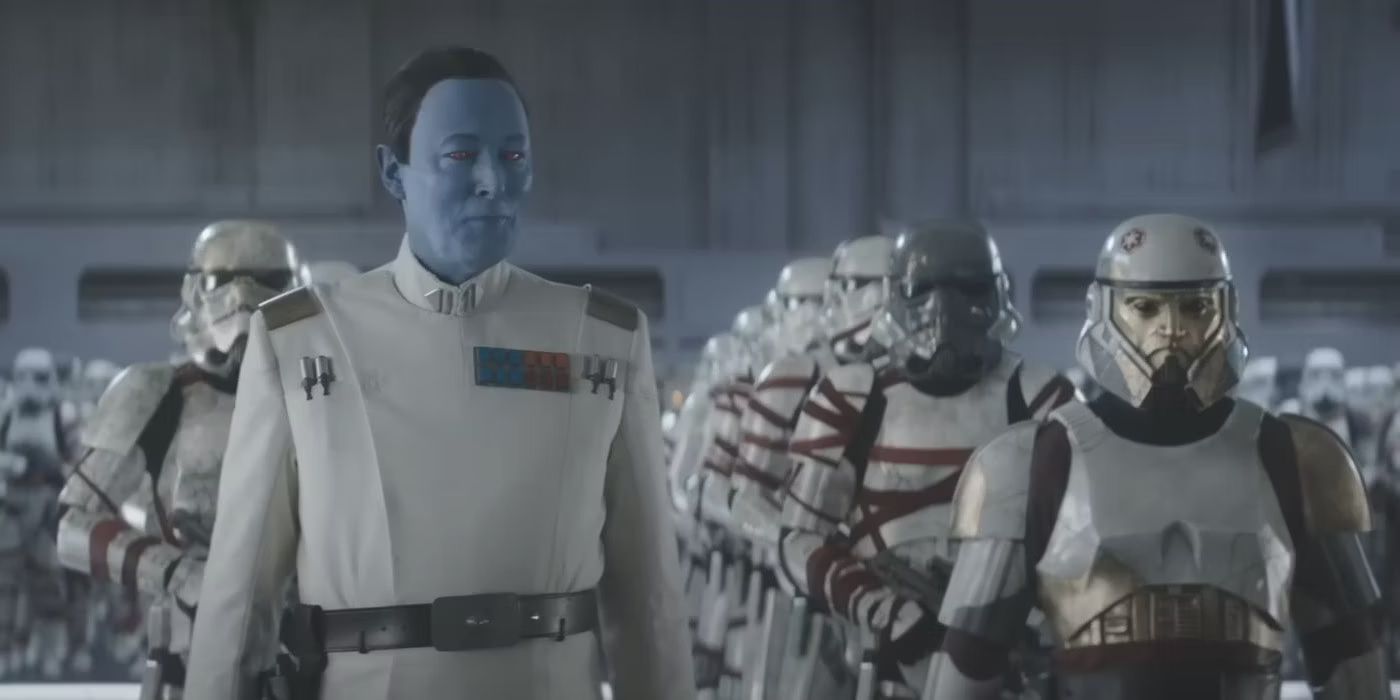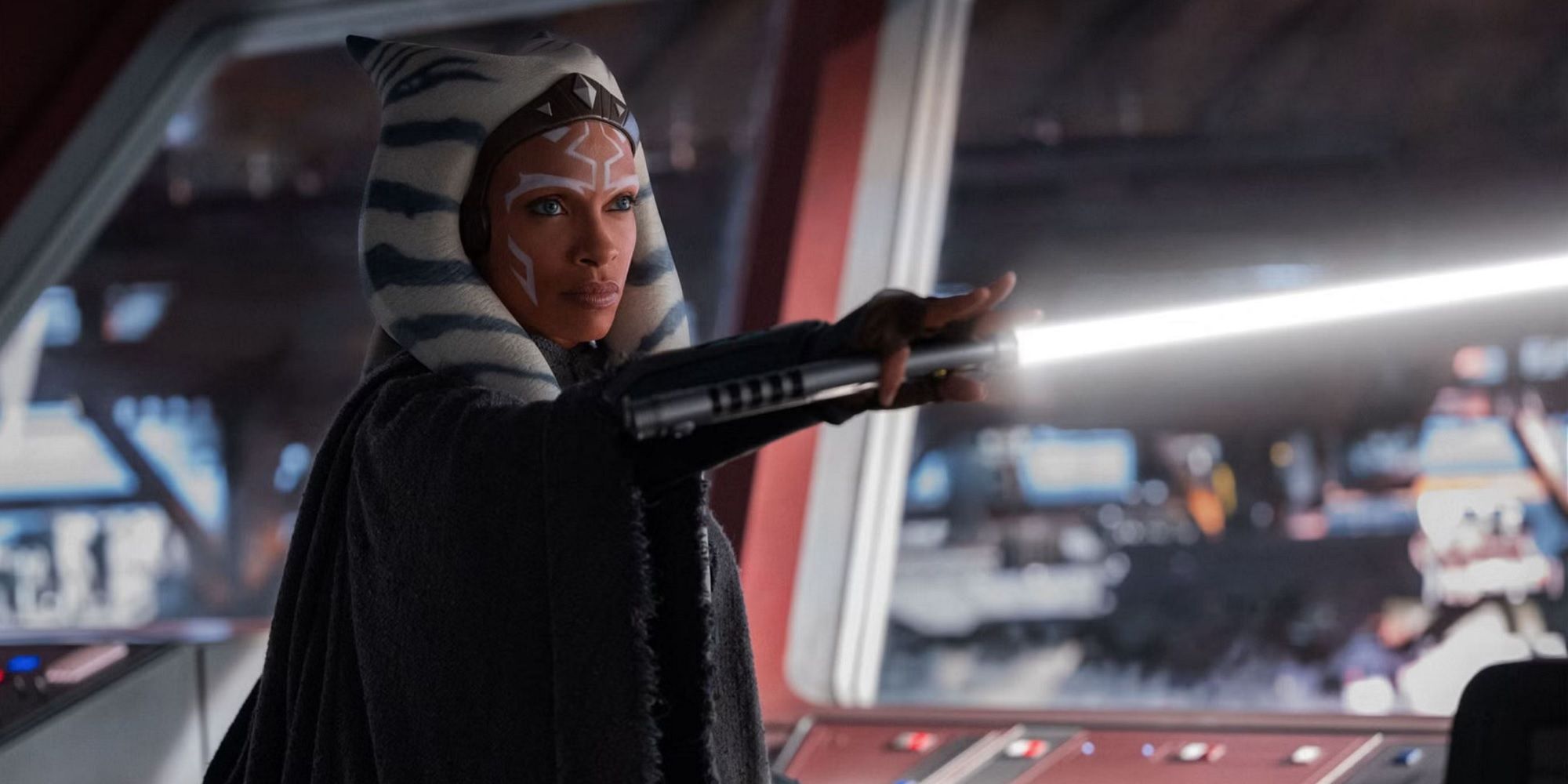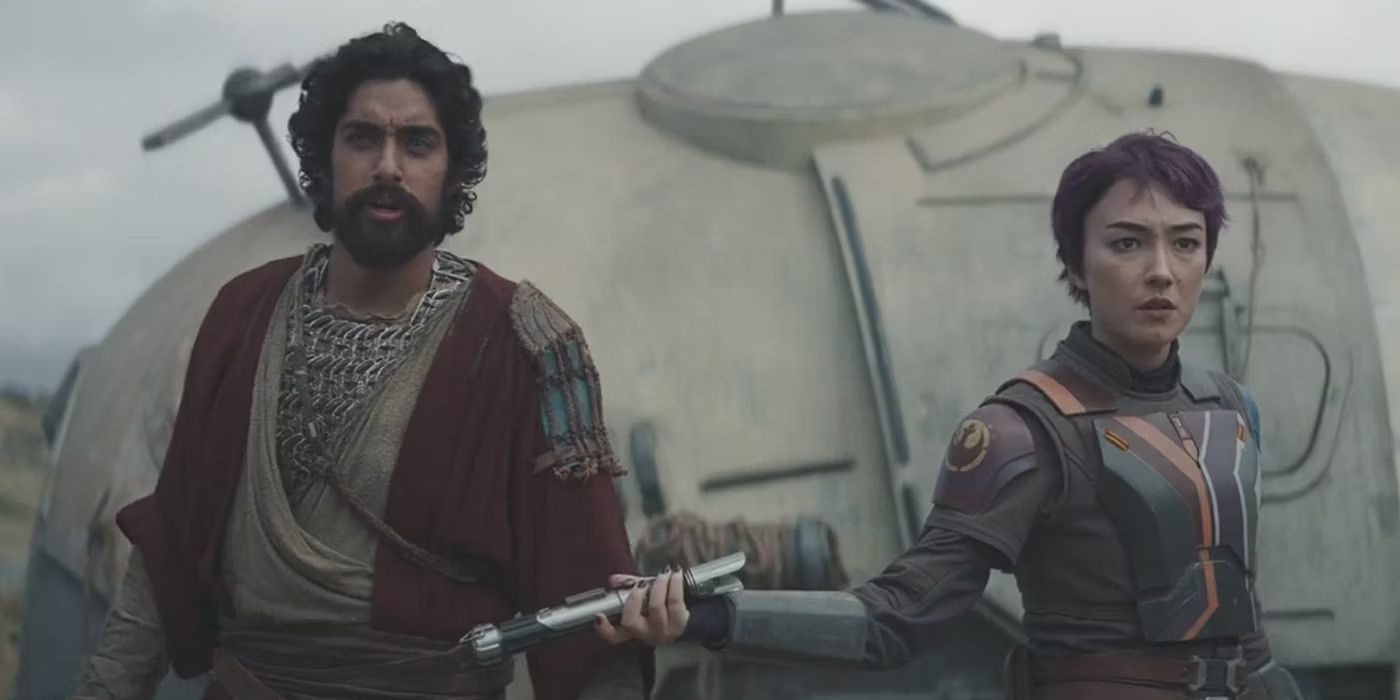As Lucasfilm continues to chart a bold new future for Star Wars on Disney+, Ahsoka brought together fan-favorite characters from Star Wars Rebels to take on the heir to the Empire for the fate of that galaxy far, far away. The series' primary cinematographer was Eric Steelberg, who previously worked on Hawkeye and Ghostbusters: Afterlife. For Steelberg, the chance to work on a Star Wars project was a dream come true, from Ahsoka Tano's live-action adventures to debuting the sinister Grand Admiral Thrawn in live-action.
In an interview with CBR, Steelberg explained the various techniques used to bring the acclaimed series to life. He also shared his experiences working with Ahsoka creator Dave Filoni and reflected on how his lifelong love of Star Wars informed his approach to the show. All eight episodes of Ahsoka are now streaming on Disney+.
CBR: Ahsoka has characters with colored skin like Ahsoka and Grand Admiral Thrawn, and colored hair like fan-favorite Jedi Sabine Wren. How did you approach filters and lighting to get those colors properly on camera?
Eric Steelberg: It's pretty challenging! There is a lot of testing that goes on for what’s going to look right on camera. Things like the shade of Thrawn or of [Sabine's] hair, we tested quite a bit, with many versions of each. And also things like [having] Ahsoka, Sabine and Thrawn in the same frame or with Ahsoka herself because you're dealing with blue and orange. [laughs] It's tricky, and it's not so much that we have to change filtration or do anything different, it's that you have to make sure that you're using whatever light we were using to test those colors under.
We carry that through to the scenes that we shoot with them, which can be tricky because if the day we're shooting the scenes, we want to change the color or exposure of the light, that has a very large impact on the shade of blue or orange, the saturation of the hair or even the makeup that Sabine wears. Contrasting things [in] scenes might look really good on the test, but if the scene ends up having more or less contrast, that can greatly affect the makeup and there's a lot of it in our show. It was making sure that we didn't go too far off of what we tested because that could be problematic. It kept us in a very neutral-colored light for most of the series because you don't want to change those things.
The other constant on the show is, being Ahsoka, half the main cast has lightsabers. How was playing with the lighting around the lightsabers -- especially with a protagonist using white lightsabers, which have their own lighting and color change?
We tested those as well. We'd dial right into the lightsabers we had and alter the color of them remotely. We'd sit there playing with different hues, saturation and brightness, and that's tricky too, because there had been some other instances from other shows where the lightsabers were the biggest source of light. I think the feeling was that strayed a little too much from what we loved in the original movies; it became too present. In the conversation with Dave [Filoni] that I had, it's good that the lightsabers give off light because they're so bright, but maybe they should only light a face when they get close to somebody.
In the original movies, they don't put out any light; it's all post-production. But now because you can make them put out light, doesn't mean we should exploit that to such a large degree. I also felt that it was more threatening if you only felt the light from the sabers when they got close to a face versus when they’re just holding them out in front of them as some random source -- that's not very threatening to me. We had to balance that with our exposures and lighting and make it all blend. It was tricky because, particularly in dark scenes like the forest in Episode 4 when you can use the extra bit of light on the faces, it still worked better when the characters were largely moody, silhouetted and their faces glowed when their sabers got very close to them.
In preparing to develop the visual aesthetic for Ahsoka, did you and Dave Filoni revisit the original Star Wars trilogy, Star Wars Rebels and/or The Mandalorian?
It was a little bit of all those things. There were definitely talks about what they were doing in The Mandalorian in all the seasons and even about what worked in The Book of Boba Fett and Obi-Wan Kenobi -- wanting to make our show feel like it's in the same universe while giving it its own identity. We're huge fans of the original trilogy; that's what I grew up with, what I was essentially born into and has always been my touchstone and my home base for the look of this show, both creatively and tonally. It's well-documented that Dave is a huge [Akira] Kurosawa fan in the same way that George Lucas was. We talked a lot about Akira Kurosawa's movies, all of them.
As far as Star Wars Rebels, I had only seen a couple episodes way back when they were first out because I had kids and would watch it with them, but I never really got into it, to be honest. Dave gave me a list of the episodes that I should watch just for the simple sake of understanding our story and where we were coming from. There were a couple of things that we did want to reference. In Episode 2 of Ahsoka, Sabine comes to the mural, and we're recreating that shot-for-shot.
There were some things that we wanted to recreate in live-action, but I don't generally remember watching anything with him. It was just more conversations, and they were on a higher level; we didn't get into the nitty-gritty of it. It was always about tone, feel, approach and how they used [the] camera to tell a story -- what worked and what maybe didn't work as much and then use that as an approach. There was never a desire to copy or emulate some of those other movies. For Dave, it was always about tone and what he enjoyed.
What is your favorite shot in the original Star Wars trilogy and is it something you tried to evoke in Ahsoka?
It probably would be something in The Empire Strikes Back. There is some beautiful stuff in Hoth in the base. There's the scene between Han and Leia when he's trying to leave, and they're in that hallway having a conversation. It seems so simple, but I think it's beautifully done...I think about how they did such big scenes really well and such intimate scenes really well. The cinematography in Empire is widely regarded, but that's just something that jumps out. Empire is so amazing and varied.
Interestingly enough, as varied as Empire is, I think there are some parallels to Ahsoka because just like Empire goes to all these places, we also go to all these different places. How do you accomplish that and tie those things together? What's a common visual through-line, and how do you do that? The answer is, I don't know how you do that. [laughs] But you try! It wasn't a super-conscious thing, but that did come up in conversation, how Empire was able to go to all these locations and do that so well, with so many different sets and the visual tone changed so much.
The last act of Ahsoka veers into horror territory, with all the dread heralded by the arrival of Thrawn and his army. How did you convey that menace and suspense visually?
We pre-visualized every episode -- essentially shooting them in the computer with VR cameras and headsets -- and edited every episode before we filmed them. We spent eight months doing that, figuring out what we would need to build and shoot. It was an interesting process that I had never done before. When you read the script for Episode 6 with Thrawn's arrival, you realize that this is a big deal. [laughs] The importance of this was not lost on me, so how do we visually give this thing weight, importance and gravity, even for people who are unfamiliar with the story? How do you make new viewers realize this is a big deal? I’m sure that we'll have big music, but let's not rely on that. Let's pretend that’s not going to happen. If we don't have a score, how are we going to make this have an impact?
We had some amazing conceptual art from the visual effects department on what the hangar would look like...That served as a great inspiration, and it then became about how we could take those still conceptual art pieces and build [them] into interesting shots. One of my proudest contributions was making this ship arrive -- how do you make that a thing and create that build-up? The idea of the shadow, with the henge on top, where the camera booms up and reveals the ship coming over it... I was really proud of that and excited about that. I think that worked particularly well with the sound effects and score.
It was also about driving people crazy. Everybody's been waiting to see [Thrawn], and you're still delaying it a little bit by showing him from behind and with his feet, and then you finally give it to them. It was all about the build-up and a lot of fun to do. I don't know how we would have done that without pre-visualization. That's just one of those things where we tried some shots, they didn't quite work, we'd show it to Dave and Jon Favreau, get notes and keep refining it until we got it to a place where we really liked the pre-visualization. Once that happened, that's what we went with.
What was the very first thing you shot for Ahsoka, and what was the very last thing you shot?
The first scene that I shot was from Episode 2, where they're up in the control room above the shipyard. They walk in and talk with Myn Weaver about who could give them the authority to get that ship that's taking off. That was the first two days of the shoot and in our virtual set, the Volume, which was my first time with that. It was my first day on set, dealing with a scene with all these people, with all these different colored faces on a red set, red droids, people with Caucasian skin and a virtual set out the windows – I had it all.
I was just thrown into the deep end and absolutely terrified. I didn't sleep the night before and felt sick to my stomach from the stress of it, both the technical [aspects] and that I couldn't believe I was here doing this. That was the first scene we did and, by the end of it, I felt great and totally at home. Everybody was wonderful and helped me along with the technical stuff of the virtual environment.
The last thing I did was shoot Eman Esfandi on a green screen, doing his visual effects shot as the hologram that appears in Episode 1, when Sabine goes to her room in the tower and pulls out the holodisc and plays the message. Those shots of Eman were the last things that I shot, which I think was the second-to-last day of the entire shoot because we had to cut his hair and everything to make sure everything was finished, which was a great day to end on. He got very emotional shooting it knowing that it was his and my last shot – and there was a lot in between! [laughs]
What was the process of working with Dave Filoni and Ahsoka's other directors?
It was great. It was a dream come true. They're all incredibly collaborative. Dave, as the showrunner, creator, director, number-one fanboy, all of it – everybody knows that George Lucas created the character of Ahsoka with him, and he's bestowed control over a lot of things Star Wars to him. He's got such a wonderful take and handle and understands that Star Wars is supposed to be fun. It means so much to so many different people in so many different ways and that's not lost on him. It's the best version you can imagine of having someone in charge: direct, be kind, collaborative, inspirational and get the best out of their crew because we work very long days.
[Ahsoka is] the hardest thing that I've ever worked on. A lot of days we'd have two separate crews working on different scenes, and Dave would be bouncing between sets, managing it all and talking with the directors. It was a big job and he was our rock; I can't say enough good things. I worked with Dave, Peter Ramsey, Jennifer Getzinger, Steph Green -- I worked with all of them because even if it wasn't my episode, we'd still shoot certain scenes. I'm not credited for Episode 8, but I still shot a couple scenes on it and they're all fantastic.
Peter, with his background in animation, was great to work with and very similar to Dave in shooting all those lightsaber fights in Episode 4. It's an episode of fights, so how do you keep that interesting? Peter was super-collaborative with me in trying to figure out how we do this and design it with the stunt team. Like working with Dave, it was about trying to do something, so it never [felt] stale and still [moved] the story forward that we needed to tell. Make sure the story wasn't lost amongst the fighting and that the fighting wasn't just fighting. The fighting was still for story's sake, which is an incredible challenge, but Peter did a great job.
Steph Green, who did an episode of The Book of Boba Fett, she was great to work with. Her and Jennifer Getzinger are both very seasoned television directors. I learned a lot about what’s important to shoot because you've got to keep a pace. They were both so wonderful with the actors. It was a real gift and I learned a lot from them. Hopefully, it went both ways! The collaborations, while different, were all really healthy. Everybody just wanted to make sure we were doing the best, most flavorful version of Star Wars.
That's a thing that they were talking about on set daily: if it felt like Star Wars. They were asking me to make it feel like Star Wars...because the Star Wars brand is a thing. It's not Star Trek, Blade Runner or any of these other shows that have been inspired by Star Wars. It's easy to go off-track, I think, but nailing something that still feels like Star Wars is a pretty good feeling.
When you're working on properties that you grew up with like Star Wars and Ghostbusters, what do you try to keep in mind?
The feeling I had when I watched these movies -- what I connected to and what makes these movies resonate with me. Ghostbusters, Star Wars, these franchise movies, were very formative in my childhood...The only reason I was indoors was to watch movies and I would watch movies repeatedly, just on loops, because they made me feel something, helped me escape, and I just fell in love with the characters and stories. As an adult and someone with a job that has to continue these stories, there's a tremendous amount of responsibility. That responsibility is to try to recapture the things that made me feel that way when I was a kid. Hopefully, that translates and I can share that with other people, even though everybody takes their own thing from them. But then, there's a huge fear too. [laughs]
I'm so excited to work on these, but I really have to make sure that I'm not participating in screwing them up. Everybody wants to jump at the chance, but there's a healthy amount of fear and anxiety that goes into it because you don't want to disappoint anyone, particularly myself. Until you do it, you're not sure whether or not you're capable of it. Just because I know how to shoot and I'm a fan of something, will those things intersect and complement one another? But at some point, you've got to try it and take the leap. If Dave thinks I can do it and will push me to do my best at it, then he must see something or Jason [Reitman] must see something. But it's terrifying!
In the case of Ghostbusters, you have the original creators of it on set going "That's great!" Another scene goes by, they don't say anything and you're like "They're not saying it's great, do they not like it?" And then you realize that they think it's great; they just don't feel like saying it every single scene. It's the constant desire of wanting to make the person who created it happy is really what drives me. Beyond that, there's a lot of excitement in doing this stuff. Every once in a while, you step back and go "I'm shooting inside a spaceship in Star Wars," or "I'm shooting a lightsaber fight."
I feel like I’m maybe midway through my career, and it's hard not to feel like I've achieved everything that I could’ve hoped to achieve and been happy with it. I'm really happy with the result and proud of the show...[I'm] really pleased that so many people are saying that [Ahsoka] feels so Star Wars. It's a funny thing to say because Star Wars is whatever anyone says it is, but I think people are saying it's giving them the feels that Star Wars gave them years ago, which is good because I understand that. That really connects with me because the feeling of Star Wars has been with me since I was a kid and with me in everything that I've ever done. Dramatic, independent, that feeling of Star Wars has always been inside me and I finally got to get it out. [laughs]
Ahsoka is available to stream on Disney+.

